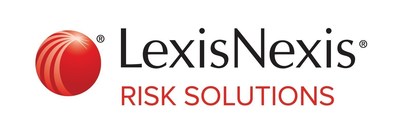LexisNexis® U.S. Insurance Demand Meter: Consumer Auto Shopping Clocks in 'Hot' and New Policy Growth Registers 'Warm' as the Industry Hurdles 2024 Market Activity
Key Takeaways
-
Shopped Policies-in-Force Reach New Record: At the end of Q2, 46.5% of policies-in-force had been shopped at least once in the past 12 months, the highest rate seen since publication of the first LexisNexis®
U.S. Insurance Demand Meter in 2020. -
Highly Populated States Dominate Shopping Volumes: New Jersey (33%),
Texas (17%),California (16%), andFlorida (9%) led all otherU.S. States in Q2 shopping growth rates. - Rate Reductions and Vehicle Purchases Help Spur Shopping: For the top 25 auto insurers, almost 40% of Q2 2025 rate filings were rate reductions.
- Single-Driver Policies Demonstrate the Strongest Shopping Activity: Since Q2 2024, policies covering individuals with fewer vehicles or comprised of single drivers were shopped and switched the most, outpacing multi-car policies, indicating this demographic is now more reactive to rate changes.
Key Observations
"The second quarter underscores how the insurance market remains in high gear, driven by the lingering effects of recent hypergrowth in shopping activity," said
Direct Channel Momentum Continues to Influence Trends
Similar to Q1 2025, direct channel and the non-standard market spurred Q2 shopping activity. For the eighth consecutive quarter, growth in the direct channel led its exclusive and independent agent counterparts, netting 22.8% year-over-year growth for the quarter, likely the result of more insurers re-igniting marketing engines and expanding risk tolerances.
Additionally, in Q2, growth among shoppers with existing policies (10.1%) outpaced uninsured shopping growth (7.6%). This trend suggests that insurer outreach, including targeted marketing campaigns and renewal notifications prompted more existing customers to reassess their insurance needs and seek new quotes.
These trends also varied by geography, with only two states –
Rate Reductions Help Fuel Consumer Activity Amid Shifting Market Dynamics
The second quarter marked another period of evolving market conditions, which was partially defined by decreasing rates. Almost 40% of rate filings among the top 25 auto insurers in Q2 were rate reductions, helping sustain higher new business activity and prompting consumers to shop and consider switching providers. The average rate decrease for the quarter was –4%. By comparison, the average rate increase was +4.4% for the quarter, most likely reflecting changes in states that have been slower to adopt rate increases that have taken place elsewhere in the
New Vehicle Purchases, Single-Vehicle and Individual Drivers Seeing Policy Shopping Changes
Another factor influencing shopping was the activity tied to new vehicle sales. Since
Despite continued growth in insurance shopping, new business figures associated with these transactions have remained steady. Over the same period, new business tied to vehicle purchases hovered between 6% and 8%, a trend that remained steady in Q2 2025. The industry also experienced a notable shift in consumer shopping behavior based on the number of vehicles owned. In Q2 2024, policies with lower vehicle counts began exhibiting higher shopping growth, while shopping among households with multiple vehicles decreased. Similarly, growth in shopping activity for policies with just a single driver reinforced this trend. In Q2 2025, shopping and switching for policies covering an individual driver outpaced growth seen in policies insuring multiple vehicles.
This uptick among individual drivers and smaller households suggests a heightened emphasis on affordability – a trend potentially driven by tightening household budgets or shifting consumer priorities among rate-conscious shoppers.
"With 46.5% of policies-in-force hitting the market over the previous 12 months, policyholders, often those with the highest lifetime value, will help determine the growth and profitability outcomes for the industry," added Batiste. "While these dynamics unfold against a backdrop of rate decreases, carriers shouldn't take their eyes off retention. For example, to stay competitive, insurers may need to further tailor their retention and engagement strategies to capture and retain increasingly active, smaller households or individuals with fewer vehicles."
Looking Ahead
In the wake of unprecedented recent market shifts, more insurers are filing for rate decreases, a notable change after the previous two years have been dominated by rate hikes nationwide. During the first half of the year, consumers acted quickly to get ahead of potential personal economic changes and tariffs leading to increased vehicle purchases and, consequently, a rise in auto insurance shopping. Should new trade deals take effect, they may counteract expected rate decreases and emerging signs of market stabilization, potentially ushering in renewed movement and reshaping expectations for the remainder of the year.
Download the latest
LexisNexis
The LexisNexis®
About
LexisNexis® Risk Solutions harnesses the power of data, sophisticated analytics platforms and technology solutions to provide insights that help businesses across multiple industries and governmental entities reduce risk and improve decisions to benefit people around the globe. Headquartered in metro
1
Media Contacts:
Annalysce Baker
Communications Manager
Phone: +1 678.436.1579
annalysce.baker@lexisnexisrisk.com
![]() View original content to download multimedia:https://www.prnewswire.com/news-releases/lexisnexis-us-insurance-demand-meter-consumer-auto-shopping-clocks-in-hot-and-new-policy-growth-registers-warm-as-the-industry-hurdles-2024-market-activity-302532713.html
View original content to download multimedia:https://www.prnewswire.com/news-releases/lexisnexis-us-insurance-demand-meter-consumer-auto-shopping-clocks-in-hot-and-new-policy-growth-registers-warm-as-the-industry-hurdles-2024-market-activity-302532713.html
SOURCE


